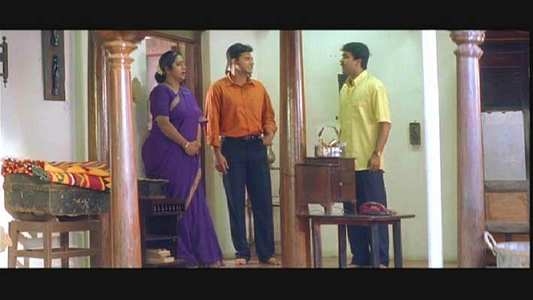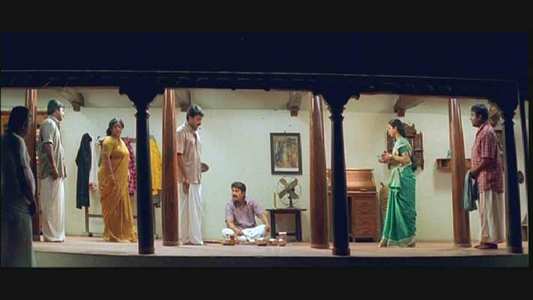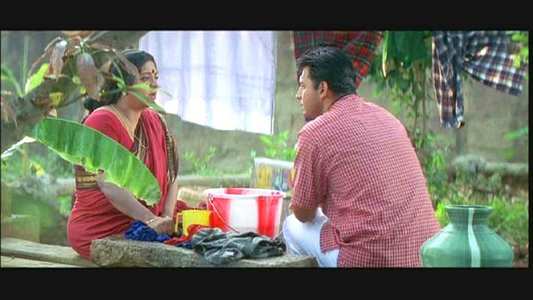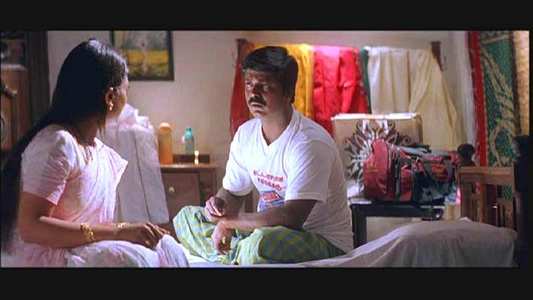Review of Anandam
Introduction
Anandam, was regarded as one of Indian Tamil cinema`s top five movies of 2000 -2001. The film is south India`s answer to Indian cinema`s masterpiece Hum Appke Hain Koun (1994), which was a movie that reflected on India`s moral and cultural values told through melodrama and songs. Anandam, a box office success, has since then been re-crafted into numerous Hindi and Tamil part re-makes such as Om Jai Jagdish (2002), Kabhi Kushi Kabhi Gham (2001) & Samudhiram (2001).
Many Indian films presently are family based dramas with similar plot conventions and predictable characterizations. Examples can be seen in the following:
· 2 or more brothers who love each other dearly
· Youngest brother studying hard to become financially successful
· Respecting their countries ideals and culture
· High regards for the elder brother & mother
· Cousins or far-distant relatives who become romantically involved
· Arranged marriages
· Short love stories
· Separate comedy track with a comedian etc…
These at times can be seen as faults. Anandam also has these faults but still manages to become a wonderful film to watch due to its no-nonsense screenplay, re-playing with the predictable conventions in its simplest form and its detailed and human like characters.
It quickly tackles the story with light humor, wonderful melodrama, and high technical values. Never does it question the viewer`s morality or tires to preach to them how to live a lifestyle. It simply tells the story of three brothers who try hard to work, love and share their emotions with each other and their family and friends.
The film features a wonderful, ordinary looking cast which makes the film quite real at home instead of the usual clap-trap glamour of "Indian cinema". Their performances have positive effects on the viewer. The songs are also beautifully scored and play a part in the narration of the screenplay.
The director of this film, Lingusamy was once upon a time an assistant to the leading Tamil director Vikraman. He has shown a similar style of Vikraman in his film-making approach for Anandam but adds his own touch to ensure that this film has his own unique look to it. Top marks indeed!

Video
The DVD is presented in an aspect ratio of 2.25:1 which has been cropped from the original aspect ratio of 2.35:1. Yet the cropping is not as affected when viewing as most of the frame is covered on this DVD.
The 35mm print negative source used for this DVD appears to be in good condition. The source used was that of the interpositive negative and the film remains quite clean from blemishes with only small white dots appearing randomly. While they don`t affect viewing, it is noticeable. It would have been better if the telecinist used the Digital Video Noise Reduction (DVNR) process to remove some of the white dots. But some purist might argue that this could lead to digital filtering problems.
The DVD had small signs of compression artefacts, also some elements of softness affected seconds of picture information. But all these problems appeared during a few seconds in the whole film and might be missed by some viewers.
The film does have excellent sharpness detail which brought out information in a new light never shown on the big screen. The colour fidelity is very well handed and the definition of the black details and contrast levels are also as good.

Audio
The 5.1 Dolby Digital sound is basically mono and the mono sound remains mostly on the centre channel, which is clear and audible to the ears. The only time the other channels kick in are during the songs and musical score.

Features
None, except for decent English Subtitles.

Conclusion
The excellent film is presently on a decent DVD disc, and is worth purchasing for your Indian film collection.
Your Opinions and Comments
Be the first to post a comment!